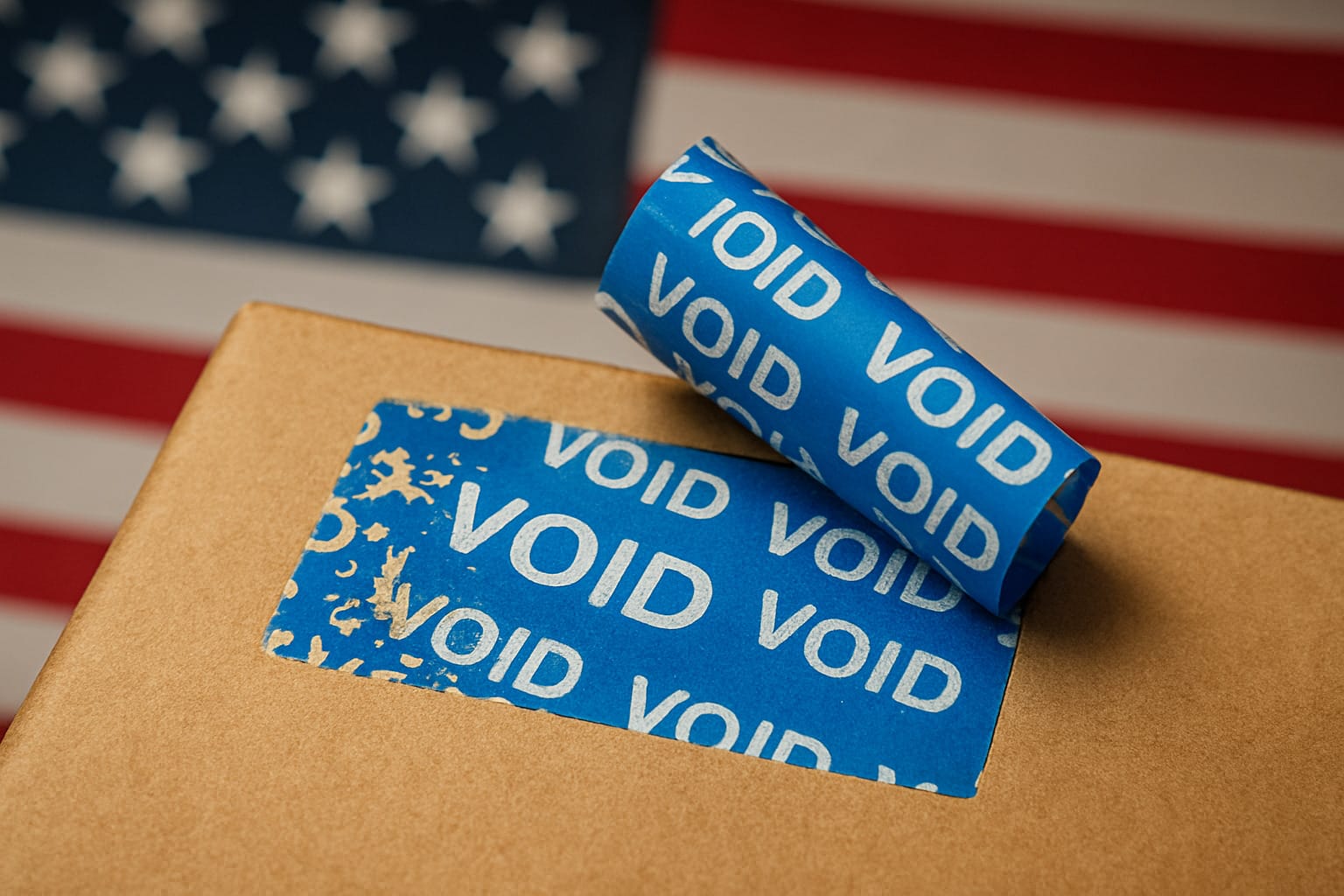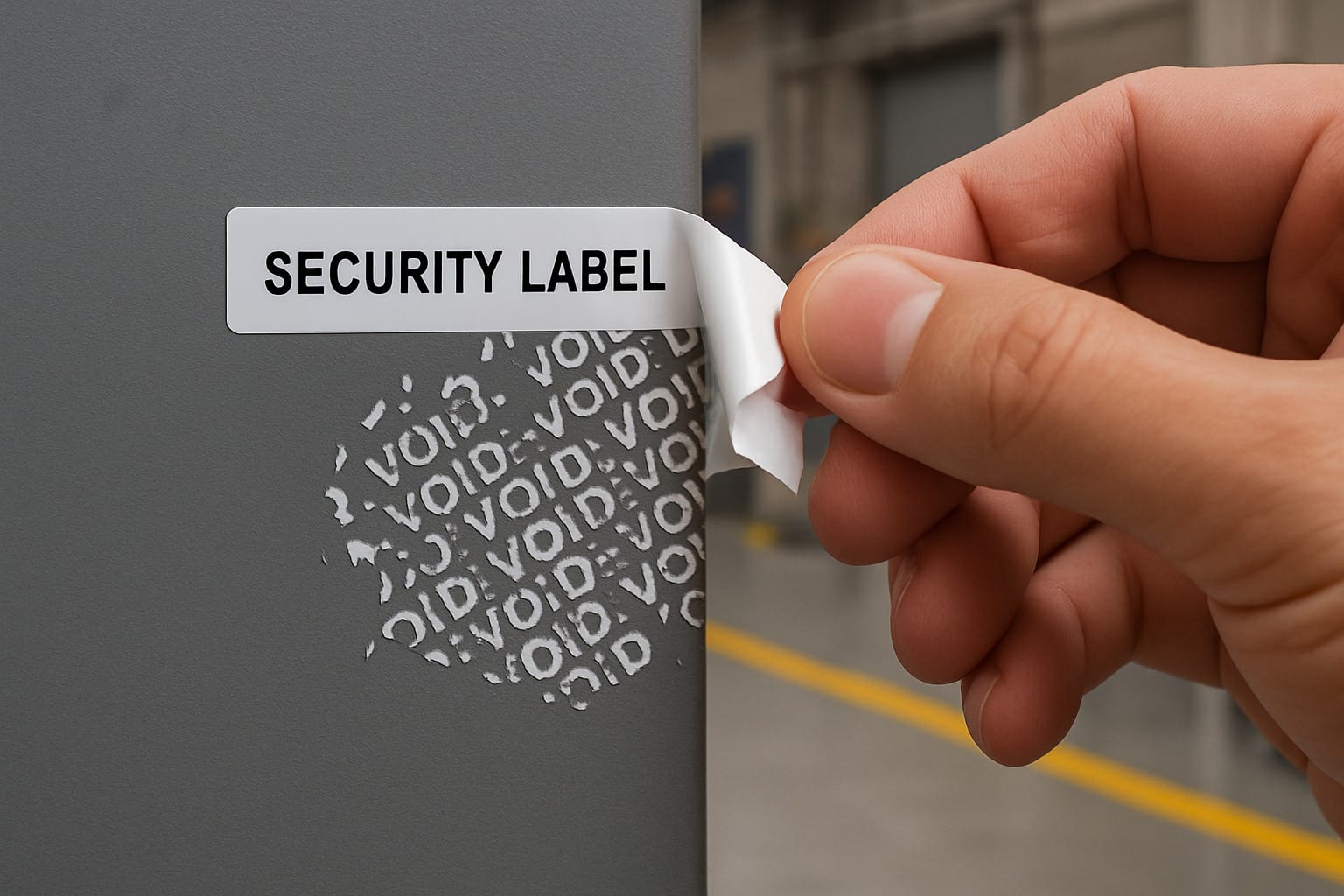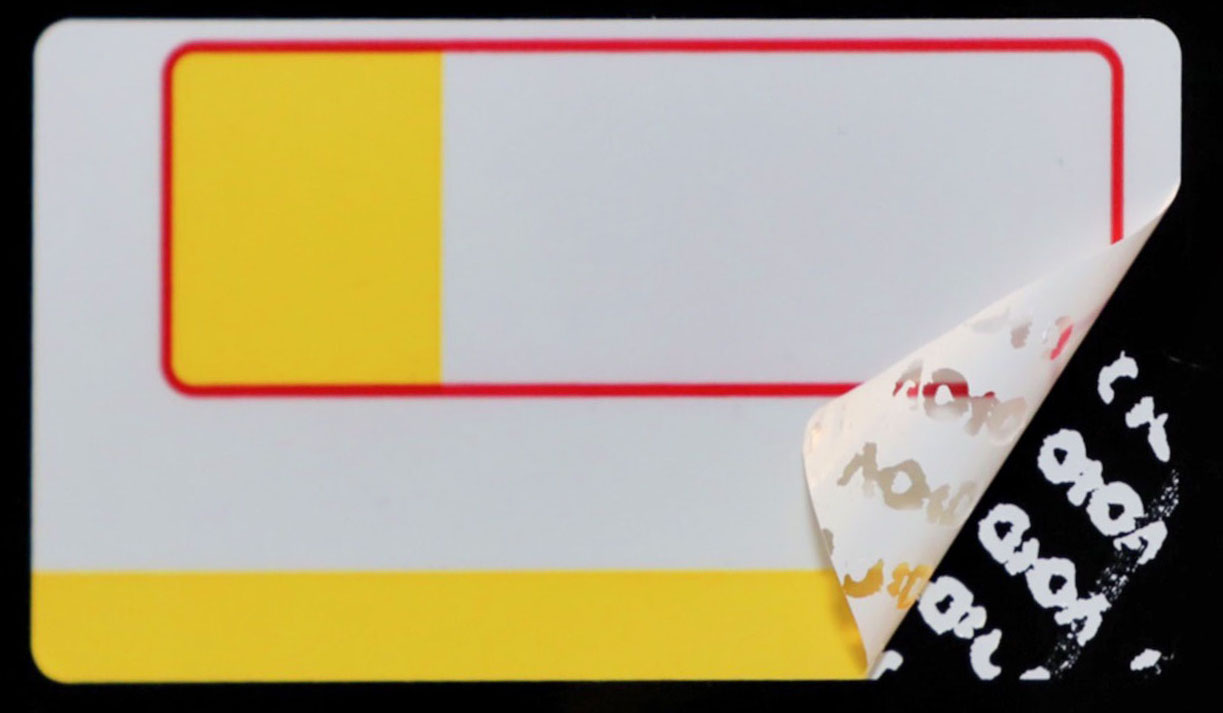Why Tamper Evident Vinyl Labels Are Essential for Product Security
Tamper evident vinyl labels are specially designed security labels that fragment, tear, or reveal warning messages when someone tries to remove them. These labels use destructible vinyl materials that make tampering obvious and prevent label reuse.
Key features of tamper evident vinyl:
- Destructible facestock – Breaks into small pieces when peeled
- VOID messaging – Reveals hidden text upon removal attempts
- Temperature resistant – Works from -40°F to 180°F
- Chemical resistant – Withstands harsh environments
- Permanent adhesive – Cannot be cleanly removed or reapplied
The need for tamper evident solutions became critical after the 1980s Tylenol tampering incidents that led to fatal poisonings. Today, 3.3% of global trade consists of counterfeit and pirated goods, making tamper evident vinyl a crucial defense against fraud and tampering.
These labels work by using low-shrinkage vinyl films with high dimensional stability. When removal is attempted, the material immediately fractures or leaves behind visible evidence like “VOID” patterns. The permanent acrylic adhesives (typically grades 300 or 350) create such strong bonds that the label destroys itself rather than coming off intact.
Common applications include pharmaceutical packaging, electronics warranties, automotive VIN labels, food delivery seals, and asset tracking. The labels provide both consumer confidence and legal protection by making tampering attempts obvious and irreversible.
How Tamper Evident Vinyl Labels Work & Where to Use Them

The magic behind tamper evident vinyl lies in its clever engineering. Think of it like a security system that destroys itself rather than allowing unauthorized access. When someone tries to peel off these labels, the vinyl material immediately fractures into tiny pieces, making it impossible to remove cleanly or reuse.
The mechanical fracture happens because the vinyl facestock is designed with a built-in weakness. Under normal conditions, the label stays perfectly intact. But the moment someone applies peeling force, the material breaks apart in irregular patterns. At the same time, many labels reveal VOID messages that appear on both the remaining adhesive and the surface underneath.
What makes this system so effective is the destructible facestock working together with high-performance acrylic adhesives. These adhesives—typically grades 300 or 350—actually bond stronger than the vinyl material itself. So when you try to remove the label, the vinyl gives way first, fragmenting before the adhesive lets go.
Tamper evident vinyl performs reliably across extreme temperatures, from -40°F to 180°F. This wide range means you can use these labels on everything from frozen food packages to automotive parts near hot engines. Many of these materials also carry UL 969 recognition, which is crucial for regulated industries like pharmaceuticals and electronics.
Automotive VIN labels represent another smart application. These labels make it virtually impossible to alter vehicle identification numbers without leaving obvious evidence. Car thieves can’t simply swap VIN plates when the labels fragment at the first sign of tampering.
Core Features of Tamper Evident Vinyl
Tamper evident vinyl achieves something remarkable: it’s tough enough for everyday use but fragile enough to self-destruct when threatened. This balance comes from using low-shrinkage PVC that maintains excellent dimensional stability during normal handling.
The material typically uses 2 mil cast vinyl that stays flexible enough to conform to curved surfaces and textured substrates. Yet the moment someone tries to remove it, the vinyl loses its structural integrity completely. The service temperature range of -40°F to 180°F means these labels won’t fail you whether stuck on a freezer door or an engine block.
Chemical resistance sets vinyl apart from paper-based security labels. While solvents might compromise other materials, tamper evident vinyl maintains its security properties even when exposed to oils, cleaning chemicals, and harsh environmental conditions. This durability makes it perfect for industrial applications where labels face tough conditions.

The acrylic adhesives used with these labels deserve special mention. They’re formulated specifically for tamper-evident applications, creating bonds that are actually stronger than the vinyl itself. This ensures the material fractures rather than peeling off cleanly.
Industries Benefitting from Tamper Evident Vinyl
Tamper evident vinyl has become indispensable across industries where product integrity matters. The pharmaceutical industry leads the way, using these labels for essential safety protection. After the tragic Tylenol incidents of the 1980s, tamper-evident seals became standard on over-the-counter medications. The vinyl’s immediate fragmentation makes it impossible to reseal packages without obvious evidence.
Brand protection represents a growing battlefield where tamper evident vinyl serves as a powerful weapon against counterfeiting. Manufacturers use these labels to prevent counterfeiters from reusing authentic packaging. Since the vinyl destroys itself during removal, fake products can’t masquerade behind genuine labels.
Supply-chain traceability gets a major boost from tamper-evident labeling. Companies incorporate barcodes, QR codes, or serial numbers into destructible vinyl labels to track products throughout distribution.
Warranty seals have found a perfect match in tamper evident vinyl. Electronics manufacturers, automotive suppliers, and appliance makers use these labels to void warranties if products are opened by unauthorized personnel. The immediate destructibility makes warranty tampering attempts crystal clear to both manufacturers and consumers.
Application & Removal Best Practices
Getting the most from tamper evident vinyl starts with proper application. Whitlam Group always tells customers that surface preparation makes or breaks the performance. The substrate needs to be clean, dry, and completely free from oils, dust, or other contaminants. Even tiny amounts of residue can compromise the adhesive bond and reduce tamper evidence effectiveness.
Pressure application ensures the adhesive makes complete contact with the surface. Apply firm, even pressure across the entire label, paying extra attention to edges and corners where tampering attempts often start. A rubber roller or squeegee works perfectly for larger labels.
Testing your labels through angled peel tests helps verify they’re working properly. Try removing samples at different angles and speeds to ensure the vinyl fragments are as expected, rather than peeling them off in large pieces. This simple test can save you from security failures down the road.
Secure Your Supply Chain with Tamper Evident Vinyl: Buying Guide & Next Steps
Choosing the right tamper evident vinyl solution isn’t just about picking a product off the shelf. After nearly 70 years in the labeling industry, Whitlam has learned that successful security implementations start with understanding your specific needs.
- Facestock thickness might seem like a minor detail, but it makes a real difference. Most applications work perfectly with standard 2-mil cast vinyl. However, if your labels need to survive rough handling during shipping or installation, you might need something more robust.
- The adhesive selection decision can make or break your security program. High-strength acrylic adhesives like grades 300 and 350 are specifically engineered for tamper evident applications but are not interchangeable.
- Print compatibility becomes crucial when you need custom graphics, serial numbers, or barcodes. Most tamper evident vinyl materials work beautifully with thermal transfer printing, but you need the right ribbon combination. Cheap wax ribbons might save money upfront, but they often fail when you need them most.
Modern customization options can transform basic tamper evident labels into sophisticated security systems. Sequential numbering helps with traceability, while holographic elements add another layer of authentication that’s expensive for counterfeiters to replicate.
Choosing the Right Tamper Evident Vinyl Solution
Finding the perfect tamper evident vinyl match starts with understanding your environment. I always tell clients to think about where their labels will live and what they’ll encounter during their lifetime.
- Substrate compatibility isn’t glamorous, but it’s absolutely critical. That smooth metal surface in your factory might seem simple, but if it has any oil residue or powder coating, you’ll need specialized adhesives. Textured plastics present their own challenges, requiring adhesives that can flow into surface irregularities.
- Indoor versus outdoor applications create completely different requirements. Indoor labels live in controlled environments, while outdoor labels face UV exposure, temperature swings, and weather. Standard tamper evident vinyl handles most indoor applications beautifully, but outdoor use demands UV-resistant formulations.
- Extreme temperatures can surprise you. That automotive application might seem straightforward until you realize the labels need to survive both freezing winters and scorching engine compartments. Fortunately, quality tamper evident vinyl typically handles -40°F to 180°F, covering most real-world applications.
- The budget versus risk calculation varies dramatically by industry. A pharmaceutical company might justify premium security features to protect brand reputation, while a consumer electronics manufacturer might prefer basic destructible vinyl for warranty applications.
Common Pitfalls and How to Avoid Them
Even with excellent tamper evident vinyl materials, simple mistakes can undermine your security strategy.
- Label reuse attempts sometimes succeed when adhesive bonding fails. This usually happens because someone skipped proper surface preparation or didn’t apply enough pressure during installation. The solution is simple: clean surfaces thoroughly and use proper application techniques.
- Incorrect ribbon choices for thermal transfer printing cause more problems than you’d expect. Resin or wax-resin ribbons cost more initially but deliver reliable performance.
- Over-lamination errors can actually reduce tamper evidence effectiveness. While lamination protects printed graphics, it can prevent proper vinyl fragmentation during removal attempts. If you need lamination, use materials specifically designed for tamper evident applications.
- Skipping on-site testing is the most expensive mistake you can make. Laboratory conditions never perfectly replicate real-world environments. Temperature cycling, humidity exposure, and chemical contact all affect performance in ways that controlled testing might miss.
The smart approach is to test tamper evident vinyl labels on actual production substrates under realistic conditions before committing to large quantities. A small investment in testing can prevent costly failures later.
